Beginner’s Guide to Entomology
Entomology is an offshoot of biology relating to the study of insects. This article is useful if you are interested in pursuing a career in entomology or even if you just have a general interest in entomological studies. The purpose of entomology is to expand our knowledge and understanding of the science surrounding insects. In this article, we will look at topics such as how to identify an insect and what careers are available in entomology.
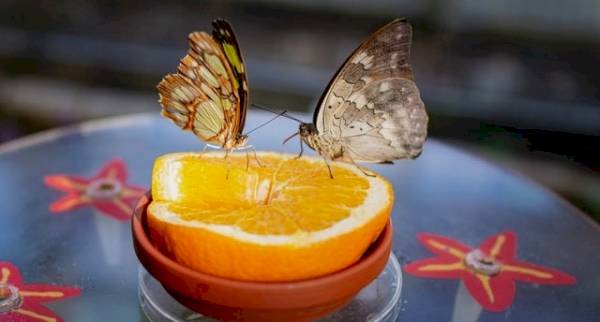
What Is Entomology?
In this section, we will look at what defines entomology in more detail. We'll also explore the purposes of entomology. Entomology meaning the study of insects has a long list of applications and purposes. While entomology can primarily broaden our understanding of insects, this knowledge can also be helpful in many practical ways including for agriculture both in protecting against the harms that insects may cause to farms as well as bettering the ability of farmers to reap the benefits of the positive value which insects offer.
Why Study Entomology?
There are many benefits to studying entomology which we will explore in this section.
The study of entomology is important since expanding our knowledge of insects can help humanity to improve our comprehension of how we can best coexist with insects. This is especially in light of a changing climate which comes with an exhaustive list of impacts of nature. If you are particularly passionate about the science of insects, then studying entomology could be the right path for you.
Your interest in insects may also be complemented by a desire to help humanity, such as through supporting agriculture and food management. Entomology is of growing importance due to global warming. Climate change is affecting these species in various ways, including through insect decline, migration and by changing their behaviour. These impacts then affect us in turn.
Entomology is vital for agriculture. It helps to unravel the mysteries of what role insects play in the spread of disease and to better enable farmers to protect their crops from insects. Entomology also helps us to enhance our knowledge of how insects benefit us, other animals and nature as a whole which is also important for the agricultural sector. By researching what diseases are spread by different species of insects and how insects spread these diseases, our command of disease spread in general can be strengthened.
For further reading, visit the Royal Entomological Society website.
What Is an Insect?
This section traverses the characteristics of an insect and how you define one.
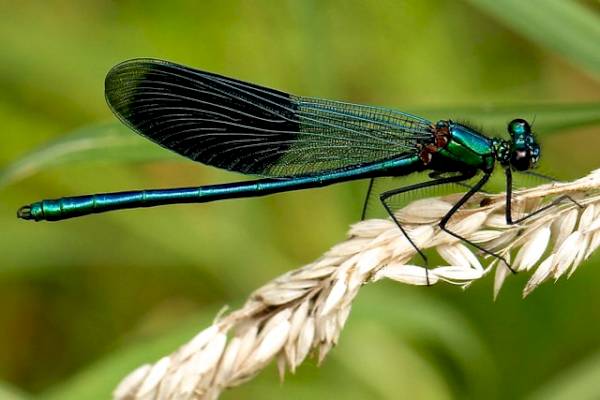
Insects are arthropods and are considered hexapod invertebrates. In terms of characteristics, insects have an exoskeleton, six legs and have three distinctive features divided up by their abdomen, thorax and head. The majority of insects have large compound eyes, and many also have antennas. In combination, the compound eyes, antennas and ocelli (which most insects have) tend to perform the bulk of sensory processing. The majority of insects have wings, and they can be found on air, on land and in some cases in water. It's estimated that there are about 27,000 insect species in the UK alone.
How to Start Your Entomology Hobby
We'll now look at ways to start your hobby in entomology.
Entomological Societies
One way of starting a hobby in entomology is by joining an entomological society. There are many such societies across the UK. Here are some examples:
- Amateur Entomologists' Society (AES): The AES, founded in 1935, is registered as a charity and is run by volunteers who have an interest in the study of insects. The AES publishes bi-monthly journals as well as a bi-monthly magazine for younger members. The AES also runs an exhibition each year near London. One of the society's goals is to ensure that the needs of insects are considered by legislators.
- British Entomological & Natural History Society (BENHS): The BENHS was founded in 1872 in the south of London with many leading entomologists of different eras having been a member of the society throughout the generations. The society holds events, publishes journals and provides small grants for entomological purposes. The goals of the society are to promote and advance the study of insects. Nowadays, they are focusing more on conservation.
- Lancashire & Cheshire Entomological Society (LCES): The LCES is a regional entomological society based in the north of England. The organisation was founded in 1882 and publishes both articles and journals. One of the core aims of the LCES is to study and promote the conservation of invertebrates in and around Lancashire.
- The Royal Entomological Society (RES): The RES is based in London and was founded in 1833. The society focuses on promoting and aiding in the development of entomology. The RES also assists in multi-national research, publication and collaboration. The society also publishes entomology books, journals and handbooks.
Visit an Entomological Exhibit
Entomological exhibits feature displays of insects usually in a wide range. Many exhibits, especially annual events, offer scientists and enthusiasts alike to come together to build connections, discuss their findings and to generate new research plans for the future.
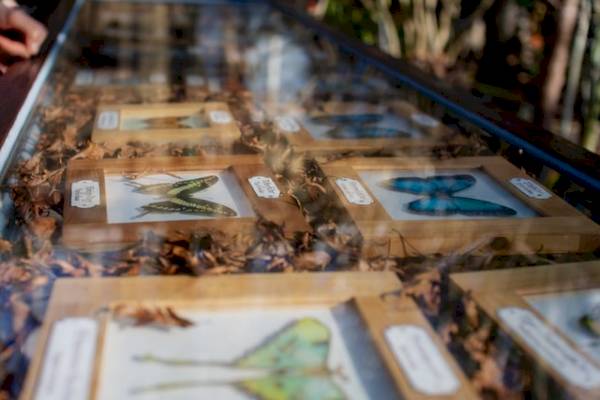
Here are some examples of UK-based entomological exhibits, both annual and permanent:
- Annual Exhibition and Trade Fair: This event is held each year at Kempton Park during the autumn months and is hosted by the aforementioned AES. At this exhibit, you'll be able to purchase specialist books both first and second-hand, entomological equipment and both view and purchase insect specimens. This event is also open to members of the public. Other societies and clubs also may be in attendance.
- The Newark Entomological Fair: This exhibit is held annually in Newark-on-Trent in the English East Midlands. At this event, you will find books and equipment for sale as well as a range of invertebrates. The fair is usually held in December.
- ELG Spring Fair: The ELG Spring Fair is another annual exhibit held in Northamptonshire every May. Insect displays are the primary feature of this fair and it may give attendees the opportunity to establish new connections.
- The Kettering Insect Show: This exhibit is also held in Northamptonshire and is organised every April. The display and sale of insects is the cornerstone of this exhibit also. However, as with the other fairs, it also offers a chance to discuss science and research with other attendees.
Read Books and Essays Dedicated to Entomology
A great introduction to entomology can be found through reading. By reading widely on entomology, you can strengthen your knowledge on the subject greatly by exploring a variety of topics and sub-topics.
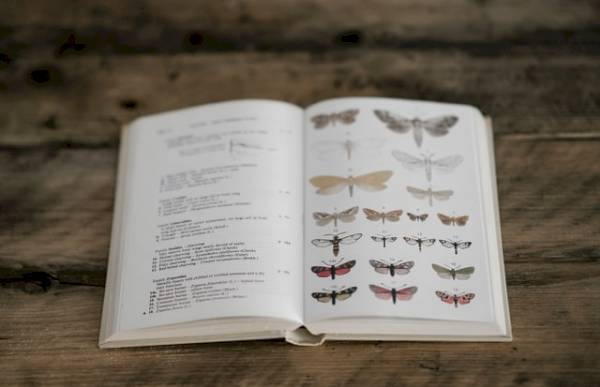
You will likely find many entomological books at your local library, possibly in sections under the name of natural history, science or biology. To purchase books, websites such as The Book Depository, Amazon and eBay will have plenty of material you could buy. Searching entomology books on any of these sites and by narrowing down your search by finding sections such as natural history will offer up a long list of examples. Here is a list of 75 books on entomology as promoted by The Book Authority.
Some of the best starter books include:
- Practical Workbook of Introductory Entomology
- Introduction to Insect Biology and Diversity
- Insects: Their Ways and Means of Living
- A Survey of Entomology (Second Edition)
- The Royal Entomological Society Book of British Insects.
In terms of essays, most entomological societies publish journals. For example, the AES publishes a seasonal journal called The Bulletin. This journal comes with plenty of essays which are produced by members regarding all aspects of entomology.
Other UK-based entomology journals include:
- Atropos
- British Journal of Entomology and Natural History (from the BENHS)
- Ecological Entomology
- Entomologist's Monthly Magazine
- The Entomologist
- Insect Molecular Biology
Entomology Supplies
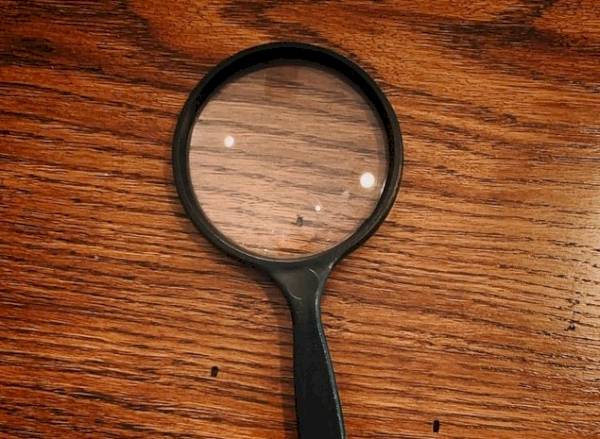
As you begin your journey into entomology, there are many supplies you'll need if, for example, you want to carry out your own research. In this section, we will look at some of the equipment that an amateur entomologist might need.
- Notepad and Pen: A notebook will come in handy for recording insect behaviour, species and other aspects related to your field research.
- Tubes or Pots: Insect tubes or pots can be used to collect insects so that you can study them more closely. Many such pots will have holes at the top so that the insect will still be able to breathe before being returned to nature.
- A Field Guide: Such guides may provide you with valuable information on insect species and behaviours, which could be particularly helpful when performing field research.
- A Hand Magnifying Glass: A hand lens will allow you to examine small specimens in nature.
- Net: A net will allow you to safely capture insects from the air for purposes of examination.
- Pooter: A pooter is a device used to collect insects from the ground. This can help to collect insects such as beetles. A pooter can be made at home too.
For additional information on entomological equipment, visit the Amateur Entomologists’ Society website.
Types of Insects
In this section, we will analyse different types of insects. There are millions of insect species around the world although most insects are included in the following seven core groups: bees and their relatives (such as ants and wasps), beetles, bugs, butterflies, flies, grasshoppers & crickets and dragonflies. Other groups include cockroaches and praying mantids.
- Beetles: Beetles are a group of insects from the order Coleoptera. There are more than 300,000 species of beetles worldwide. Beetles are most common in forests, fields and by wetlands. Among the species included in this group are ladybugs, ground beetles, scarabs and leaf beetles.
- Bugs: While bugs may refer to all insects in common language use, true bugs refer to the insect order Heteroptera. This order contains over 40,000 insect species. These species are marked by their distinctive X-shape that is formed by their wings when stationary. The uses of a sucking mouthpart with a hardened gula are also unique aspects to Heteroptera. Examples of true bugs are wheel bugs, water bugs, the European firebug and the leafhopper assassin bug.
- Butterflies and Moths: Both butterflies and moths are a part of the Lepidoptera order. This classification of insects contains more than 150,000 insect species. Lepidoptera are characterised by small scales which cover their wings, their ability to camouflage and their use of a toxic defence. Common clothes moths, monarch butterflies, painted ladies, gypsy moths and ringlets are some of the species classified as Lepidoptera.
- Cockroaches: There are nearly 5000 different species of cockroaches and, despite their negative stereotypes, only 25 are deemed pests. Most cockroach species are omnivores and usually live in tropical and subtropical climates. Some cockroaches are relatively large in the insect world (up to as much as 90 mm in length). Cockroaches usually have a pronotum, which acts as a shield atop the thorax. Some cockroach species include the oriental cockroach, the brown cockroach and the forest cockroach.
- Grasshoppers & Crickets: These two groups of insects are a part of the Orthoptera order. These species are defined by having toughened backs with large heads and long hind legs. There are roughly 18,000 species of Orthoptera, most of which live in tropical regions albeit 700 species can be found in Europe. Red-legged grasshoppers, desert locusts, house crickets and tropical house crickets are examples of Orthoptera.
- Dragonflies: Dragonflies and damselflies are some of the most well-known invertebrates. The order they make-up Odonata are almost the oldest insects in evolutionary history. Their characteristics include large heads, long and slim abdomens and two sizable wings. Examples of Odonata species are blue dashers, emperors and common blue damselflies.
- Flies: The Diptera order or flies are defined by their large compound eyes and an internal biological version of a gyroscope allowing for a high level of control during flight. Their hind wings have evolved to become modified into their organs. There are roughly 100,000 species of flies around the world. Diptera comprises species such as mosquitoes, house flies and bluebottles.
- Hymenoptera: This order of insects comprises bees, ants and wasps. These insects are plentiful in most parts of the world with the exception of the poles. While bees, wasps and ants are among the most social of insects, the majority of species in this order are solitary. Hymenoptera play a huge role in the human world as they pollinate flowers and act as parasites toward other more destructive insects. Examples of Hymenoptera include bumblebees, carpenter ants and the common wasp.
- Praying Mantids: Praying mantids or Mantodea are medium to large insects with two large compound eyes. Their head has a triangular shape and is highly mobile. Their forelegs which have spines along them are used to snap prey. The orchid mantis and Carolina mantis are two examples of Mantodea.
How to Identify an Insect
This section focuses on insect identification. You can utilise a list of criteria in order to identify a given insect species correctly.
You should consider the following:
- Where it lives
- Where it's active
- What its wings look like
- The appearance of its antennas (if present), legs and mouthparts
- It’s colours and the nature of its movements
This service will help you to narrow down your search. Other insect identification resources online can help, such as by contacting the Royal Entomology Society for help.
Common Insects in UK Gardens
We will now look at some of the most common insects that can be found in UK gardens. We will discuss information such as the characteristics of insects like bumblebees and ladybirds. Butterflies, flies, bees and ladybirds are among the most common insects you'll find in a garden in the UK. Many insects will go into hibernation during the winter months, meaning that you're more likely to find such insects during the warmer months.
The Seven-Spot Ladybird
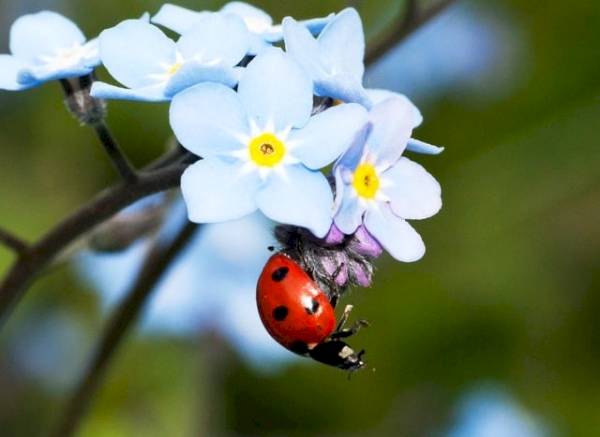
Ladybirds are easily distinguished from other insects by the presence of red wing cases which are painted with black dots. Their thorax is black and white in colour, adding to their distinctive appearance. Ladybirds are quite ubiquitous and can be found in habitats such as grasslands, coastal areas, wetlands, woodlands, farmland, towns and gardens among other locations.
Cabbage White Butterfly
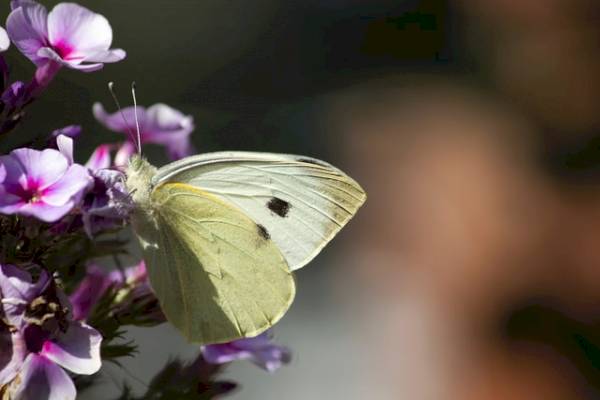
Cabbage white butterflies have a greyish body with pale wings. Males have one black dot in the middle of each of their forewings while the females have two on the same spots. They can also be destructive to gardens as they frequently eat vegetables. You can find them in urban areas as well as other habitats such as parks, fields and meadows.
Marmalade Hoverfly
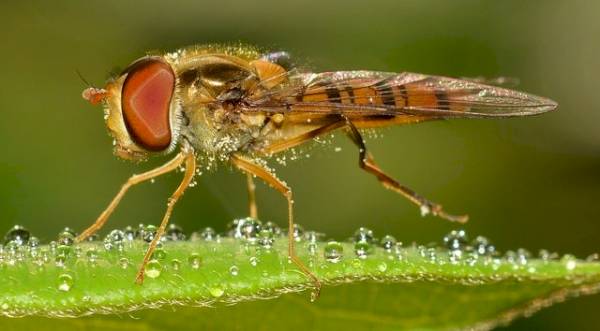
Marmalade hoverflies have two black bands that resemble moustaches on its abdomen. This is a trait unique to these flies. Some marmalade hoverflies also display white bands across their abdomen with others being significantly darker. They have two large compound eyes. Common places to find them include gardens, parks, woodland and hedgerows. They are particularly numerous in Rutford and Leicestershire.
Green Shield Bug
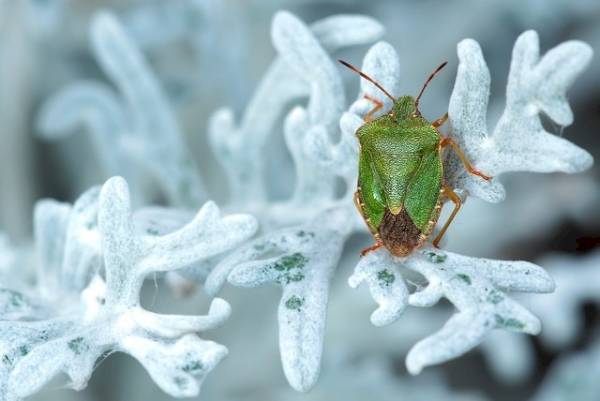
Native green shield bugs tend to be broad, flat and very green albeit with a deeply contrasting brownish-black area at their rear. They are usually 10mm in length and enjoy being in the sun. Despite being attracted to plants, they are not generally destructive. There is another species of this insect, known as the southern green shield bug, which arrived from Europe in 2003. You will often find them either species in gardens or wet meadows.
Bumblebee
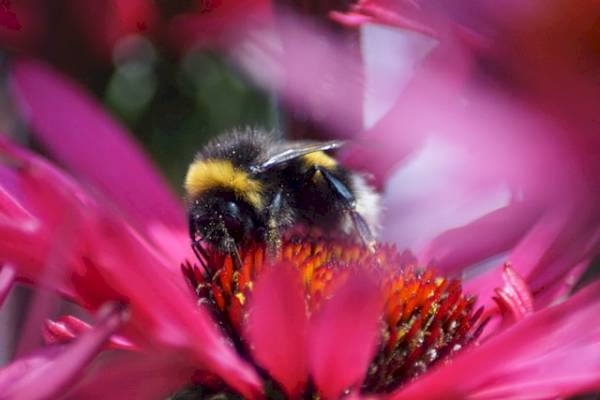
Bumblebees are among the most recognisable insects. These insects are covered in fuzzy hair and have short, stocky wings. They are great pollinators although they don't produce as much honey as honeybees. Bumblebees can be found in a range of different habitats but mostly in regions that are temperate. They may also be found in mountainous areas.
Small Tortoiseshell Butterfly
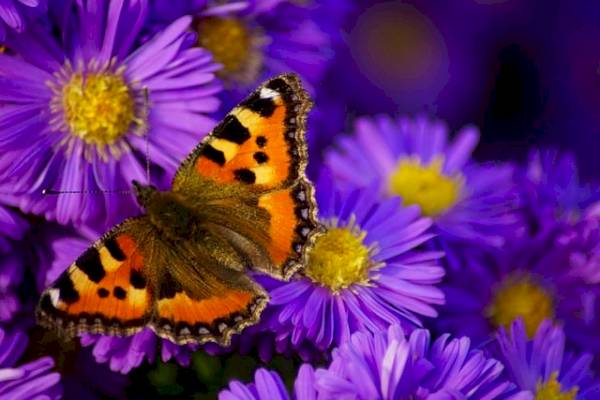
Small tortoiseshell butterflies are medium to large in size with a wingspan of 50 to 56 mm. They are part of the Nymphalidae family. They are defined by their colourful orange and black wings which also have tones of white and cream. You will find them in gardens and fields (especially those plentiful in nettles) among other habitats.
How to Encourage Insects into Your Garden
In this section, we will look at ways to increase the presence of insects in your garden. Here is a list of possible amendments:
- Avoid using chemicals: Pesticides and insecticides tend to kill or harm any insects that may come in contact with them. To avoid this, you want to minimise the use of such chemicals. A reduction in chemical-usage could encourage any and all garden-dwelling insects to visit.
- Make a pond: Ponds are a great way to attract insects. To make a pond, you need to dig down to about 2 feet (60 cm) below. Then line your pond with waterproof plastic. A filter or fountain could be a helpful addition before adding water. Ideally, such a pond should have shallow sides that slope. Ponds can attract insects like dragonflies, damselflies, water beetles and aquatic larvae.
- Plant a range of pollen and nectar sources: Planting perennials, bulbs and annuals can encourage beneficial insects to pollinate flowers such as bumblebees.
- Include Native Plants: Finding native British plants to grow will encourage insects to enter your garden. Silver birch, field maple and hazel are all native to the UK. Ideally, growing plants that are particularly native to your region of the UK will be even more beneficial. This will encourage a wide range of insects into your garden.
Can You Still Collect and Preserve Insects?
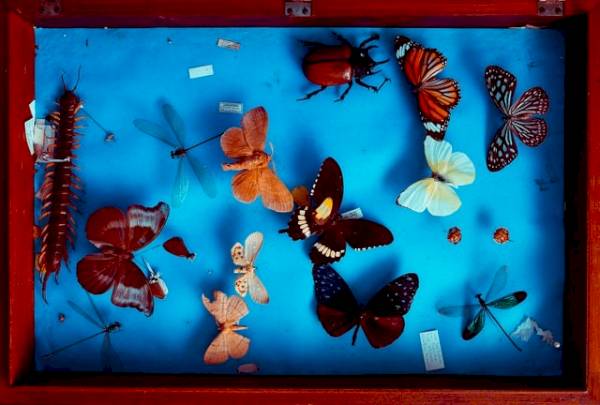
Collecting and preserving insects is the process of capturing such invertebrates and keeping them for research purposes. Some entomologists will trap them in killing jars and preserve the dead insect while others will keep them alive before returning them to nature afterwards. In the UK, you require a permit to collect insects from land that is owned by the National Trust, Forestry Commissions, English Nature reserves as well as local and national nature reserves. With the exception of protected species, people are free to collect on public land. Protected insects which you cannot collect include certain beetles and spiders. For the full list of protected species, visit this website. Dead insects can be preserved by applying alcohol to their bodies. Most insects are preserved with the use of pinning.
How Is Climate Change Having an Effect on Entomology?
Climate change is impacting biodiversity, species populations and the wildlife of habitats and regions across the world. In this section, we will look specifically at how climate change is affecting insect studies.
Entomology has seen a rise in focus relating to how global warming is impacting insect species across the world as well as how those impacts are in turn affecting our world. Conservation has become increasingly important for entomologists and is considered a key cornerstone of many entomological societies and organisations. Entomology now plays a significant role in helping us to expand our knowledge of the effects that climate change is having on the natural world.
Can I Study Entomology in Education?
We will now look at how you can go about study entomology in the UK.
There are a small number of entomological courses that you can study across the country and it is possible to obtain a degree in entomology. Among the universities and colleges in the UK offering entomology courses are:
- The University of Reading
- The University of Sheffield
- Keele University
- Harper Adams University
- Staffordshire University
- Oxford University.
Most of these courses are post-graduate studies, including PhD studies; however, Harper Adams University offers a four-year bachelor’s degree known as Zoology with Entomology.
Careers in Entomology
There are various different career paths related to entomology. In this section, we will discuss some careers you might seek as an entomologist.
Here are some examples:
- Agricultural, biological or genetic research: With a detailed understanding of entomology, said knowledge could be applicable to the fields mentioned above. Entomological research can help scientists, businesses and governments alike. In most cases, a college degree of some description will be necessary to get into these areas.
- Forensic entomology: Forensic entomologists perform analyses of any insects found on a deceased person's body. This is done in order to supplement other forensic research, which combined are used to figure out when the person died. You'll first need a degree in entomology or a related field such as zoology, forensics or biology to get into this career. Then you'll need several years of experience in the field before becoming a strong candidate for this type of work.
- Consulting: Your knowledge in entomology could turn you into a great potential consultant for companies and government sectors related to agriculture, the environment, public health or/and food processing. Once more, a degree in entomology will likely be necessary to gain a career in this area.
Insect Bites
An important issue to consider as an entomologist is that of insect bites.
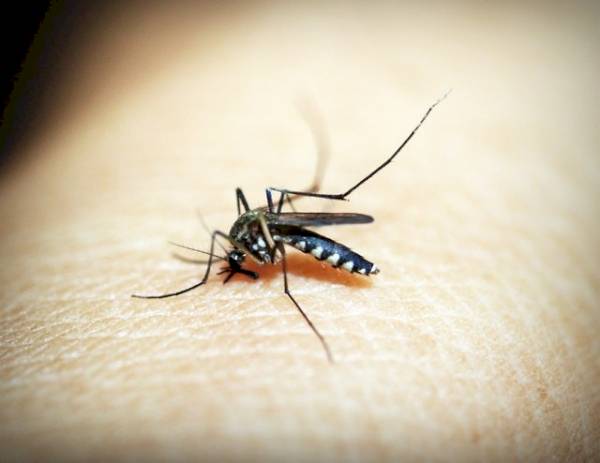
Most insect bites will cause little more than a mild level of discomfort. Some bites can be identified by the cause of swelling, rashes, itches, a heated feeling in and around the bite marks, other pains and numbness or a tingling sensation. Some reactions can be due to an allergy. It might be worth considering getting an allergy test before delving into entomology to ensure you're not allergic to any insects in particular.
Some common insect's that bite includes:
- Ticks: Tick bites tend not to be harmful and don't usually cause any noticeable reactions. However, allergic reactions can be dangerous and it's possible for ticks to pass on diseases to pets or humans when they bite which in some cases can be deadly. This can be treated by first quickly but carefully removing the tick. The tick should be sealed in a container and frozen. Wash your hands and the area with the bite before using water with soap, an iodine scrub or rubbing alcohol to the bite region.
- Mosquitoes: Mosquito bites can be itchy and cause redness and swelling. There is a risk of disease spread primarily associated with them in the form of malaria. Only some species of mosquitoes carry malaria, however. Avoiding scratching and applying calamine lotion or OTC hydro-cortisone cream can help to treat a mosquito bite. Taking an antihistamine may also help.
- Flower Bugs: Flower bug bites are often painful and extremely itchy. This would be a more dangerous bite, especially if you had an allergy too. These bites can be treated with soap and water before applying an ice pack for about 10 minutes.
FAQ
Q: What is forensic entomology?
A: Forensic entomologists study the insects on a deceased body in order to estimate when the person died.
Q: What is the largest insect in the world?
A: The Titan Beetle is considered by many to be the largest insect in the world while the Atlas Moth has the largest wings by surface area.
Q: How many insects are there in the world?
A: It's estimated that there are over 10 quintillion (ten billion billion) individual insects in the world at any one time.
Q: When did the field of entomology emerge?
A: Entomology emerged as a distinct field of study in the 19th century with many entomological societies being founded during the 1800s.
Q: Which insect species can fly the highest?
A: Alpine bumblebees have been found at the height of over 18,000 feet above sea level on Mount Everest.
Sources
https://www.environmentalscience.org/entomology
https://www.biologyonline.com/dictionary/entomology
https://www.royensoc.co.uk/what-entomology
https://www.ncbi.nlm.nih.gov/pmc/articles/PMC3628384/
https://www.panna.org/sites/default/files/CC%20insects&pests.pdf
https://www.woodlandtrust.org.uk/blog/2017/11/common-uk-insect-identification/
https://www.amentsoc.org/about/
https://www.infrodsham.uk/lancashire-and-cheshire-entomological-society
https://www.amentsoc.org/events/listings/06/
https://www.amentsoc.org/insects/getting-started/info.html
https://www.amentsoc.org/events/exhibitions.html
https://bookauthority.org/books/beginner-entomology-books
https://www.amentsoc.org/insects/getting-started/equipment.html
https://www.dkfindout.com/us/animals-and-nature/insects/types-insects/
https://www.britannica.com/animal/hymenopteran
https://www.insectescomestibles.fr/en/content/12-beetles-what-are-they-
https://www.britannica.com/animal/Heteropteran
https://www.amentsoc.org/insects/fact-files/orders/lepidoptera.html
https://www.amentsoc.org/insects/fact-files/orders/blattodea.html
https://www.wildlifetrusts.org/wildlife-explorer/invertebrates/beetles/7-spot-ladybird
https://www.insectidentification.org/insect-description.asp?identification=Cabbage-White-Butterfly
https://www.naturespot.org.uk/species/marmalade-hoverfly
https://www.rhs.org.uk/advice/profile?pid=519
https://www.livescience.com/57509-bumblebee-facts.html
https://butterfly-conservation.org/butterflies/small-tortoiseshell
https://www.ukbutterflies.co.uk/species.php?species=urticae
https://www.amentsoc.org/insects/insects-and-man/gardening-for-insects.html
https://www.gardeningknowhow.com/garden-how-to/projects/how-to-build-a-small-pond.htm
https://www.austincc.edu/sziser/Biol%201413/animal%20collections/Adult%20Insects.pdf
https://entomology.unl.edu/scilit/careers-entomology
https://study.com/articles/Forensic_Entomologist_Job_Description_Duties_and_Requirements.html
https://www.healthline.com/health/bug-bites
https://www.healthline.com/health/mosquito-bites
https://www.megacatch.com/mosquito-faqs/mosquito-bites.html
http://www.pisces-conservation.com
https://www.bristolpost.co.uk/news/bristol-news/bug-bites-signs-treatment-hospital-1634866
https://www.nationalgeographic.com/news/2016/10/animal-science-insects-biggest-moth-weta-butterfly/
https://www.worldatlas.com/articles/how-many-species-of-insects-are-there.html
https://www.britannica.com/science/entomology
Last updated by MyJobQuote on 12th June 2020.







